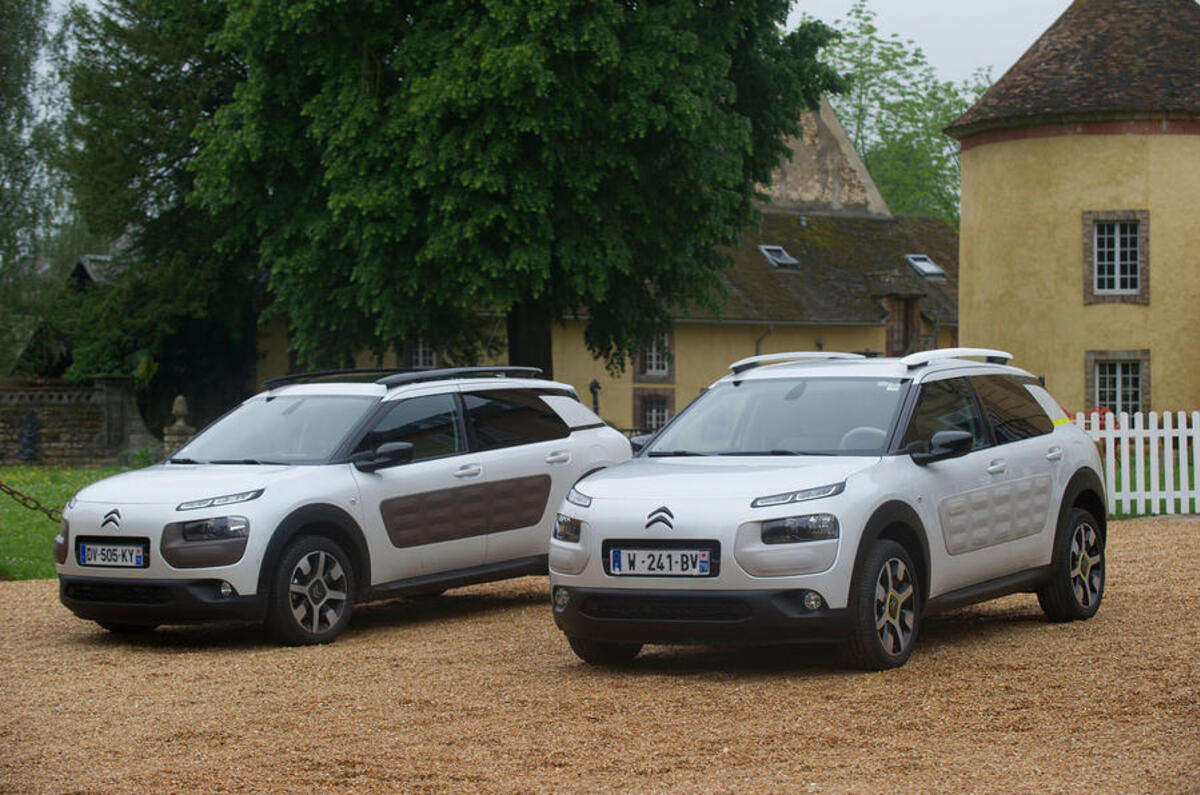I know that two swallows don’t make a summer, but there’s definitely something afoot in the car industry. Earlier this month both Steve Cropley and I attended different new technology presentations promising much greater comfort and ease for future drivers.
Steve’s drive was in a Citroën Cactus equipped with a new damping system which company engineers say will be a cost-effective replacement for the classic hydraulic suspension. Citroën also told him that a big effort would be made on reducing the level of noise and vibration entering the cabin and on a new generation of ultra-comfortable seats.
A couple of days later, I was also in France to try out Mazda’s new torque vectoring system. This hasn’t been designed to make a car turn more aggressively into a corner, but to make driving through bends and across harsh surfaces a much less taxing experience.
Mazda’s engineers pointed out that drivers don’t realise just how often they have to enter steering corrections in such circumstances and that endless corrections over the course of a journey is surprisingly fatiguing. The telemetry from the day proved it.
Also, like Citroën, Mazda is also working on a new design of seat that will be ‘significantly’ more comfortable and will also hold the driver much more firmly. Mazda says that being joggled can, among other things, cause stress in the major neck muscles that try and keep the (very heavy) human head straight and level.
Ever since the launch of the Ford Mondeo in 1993 and - to a greater extent - the Ford Focus in 1998, there’s been a general move towards improving the dynamic performance of cars. Both Fords had the huge benefit of sophisticated rear suspension systems, but also ushered in an era that wiped away the general slack, slop and stodge of experienced when operating earlier vehicles. If you have ever driven a 1990 Escort or a 1994 Astra, you’ll know what I mean.
The other big trend of the last 20 years has been the influence of the premium movement, which has lead to a big push on interior quality and fit and finish. However, I’m getting a strong sense that we’re on the cusp of a new trend. One that re-interprets the idea of ‘luxury’ as an expensive aspiration and one that will start a move away from dynamic prowess being among a vehicle’s most important attributes.
Somebody very wise once said that true luxury was ‘the removal of irritation’. I think that’s a brilliant definition. If you’ve ever been in a top-notch hotel, the whole point of the experience is to make it as seamless as possible. Nothing is too much much trouble and your every whim - virtually - will be catered for.
The era of personal super luxury and ‘wellness’ started to leak into the consciousness of the car industry a few years ago, particularly when Mercedes was carrying out in-depth research for the re-invention of the S-Class.
The sort of things that de-stressed the global financial elite, such as hot stone treatments and aromatherapy, were incorporated into the car, through scents in the climate control system and multipoint heating and massage for the seats. Even the rear seat bench was decoupled aircraft-style from the car’s structure, to try and reduce the noise and vibration being transferred to the passengers.
What has this to do with mainstream cars? Well, firstly, luxury doesn’t have to mean expensive interior finishes, powerful engines and premium badging. New luxury - the removal of irritation - could apply to relatively humble vehicles and at relatively low cost.
Hence Citroën’s clever and cost effective new dampers and Mazda’s use of software to make tiny alterations to the torque delivery of the engine and, in consequence, improving the stability of the vehicle. Both companies are also working on much better seats, a very cost effective win for increasing luxury.
Of course, Rover tried this back in the 1990s. Anyone remember the claims made for the ride quality of the 1995 Rover 400? Or the hopelessly softly tuned chassis of the 75? Saab was also about long-distance comfort and, as the driver of 1998 9-3 Turbo, I can assure no car ever ran straighter and quicker in all weathers. It was the supreme way to cover 500 miles a day.
Both those two cars were launched in the same years as the game-changing Ford Focus, and we know what eventually happened to those two brands. As one ex-Rover manager told me years later: 'we went comfort when everyone else went sporting’.
So, is the wider car-buying public really ready to embrace ease, comfort and quietness over the promise of sporting intent? Maybe. My Twitter timeline is full of DS brand ads featuring models in a tie-up with a cosmetics company. The Fiat 500 is sold successfully on fashion appeal. Even the latest Mini model is sold as more refined and more family-orientated.
"Don’t worry", the Mazda engineer told me. "Making a car easier to drive will free the driver’s mind and make driving more fun". Apex kissing could increasingly become a minority pursuit. I might be persuaded to trade it for ease and serenity.




Join the debate
Add your comment
I have always wondered how
Car companies spend a fortune developing cars and employ the best engineers they can get their hands on, and do extensive market research. So when car mags say, for example, that the latest Audi A5 or S4 are not great driver's cars, they must be good enough for the majority of ordinary drivers. I bet Audi could easily make their cars brilliant at lift off oversteer if they desired.
Yes si73, I think we cracked
I think you've hit the nail
Maybe?